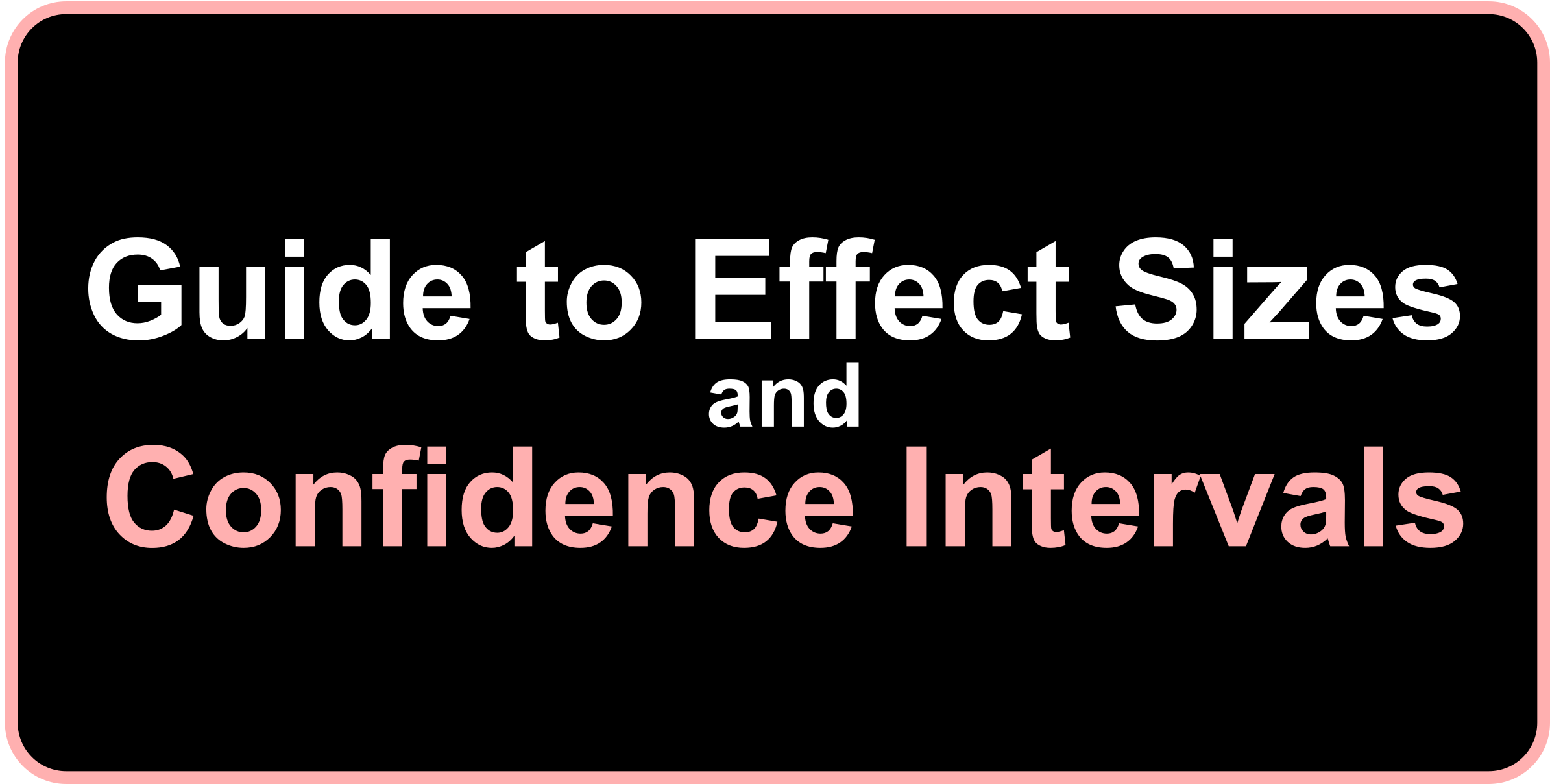3 Reporting Effect Sizes
collaboration, confidence interval, effect size, open educational resource, open scholarship, open science
When reporting effect sizes, it is important to provide sufficient detail and context to ensure transparency, convey directionality, and indicate precision. Transparency involves clearly documenting procedures and data so that others can reproduce your effect size calculations. Next, for directional effects like Cohen’s d, make sure to define the direction of comparison and align it with your hypothesis. Finally, indicate the precision of the estimate, typically by reporting confidence intervals. Narrower confidence intervals reflect more precision, while wider intervals reflect greater uncertainty (Winter, 2019). Factors like sample size, variability, and study design influence precision. Reporting effect sizes thoughtfully with transparency, directionality, and precision, enables readers to accurately interpret the meaningfulness and implications of your results. In the following sections, we provide recommendations to optimize reporting on each of these factors.
Confidence Intervals only indicate parameter precision under specific assumptions. Some have even titled this issue as the precision fallacy (Morey et al. 2016). For the same data, CIs can be computed in various ways resulting in wildly different intervals (see the submarine example in Morey et al. 2016). Such CIs are computed by inverting hypothesis tests (using the p-value obtained from a model); see this discussion by Gelman (2011). Under this approach, the CI reflects the data and model (+assumptions), not just the parameter estimate. If one is using an improper model, the associated CI will be misleading and its width will not reflect precision or uncertainty. The solution is to compute CIs based on the data at hand, such as constructing parametric (if the distribution is known) or non-parametric (empirical distribution) bootstrapped CIs, or understand that your CIs are conditional on the model you used. That said, for CIs computed for effect sizes like Cohen’s d, which assume a Gaussian distribution, the precision fallacy should not be a problem and can be used to infer precision (see this forum discussion).
3.1 Transparency
When reporting effect sizes and their calculations, you should prioritize transparency and reproducibility. No matter what tool you used to calculate your effect size (R is the most recommended tool here), you must make sure that others can easily follow your procedures and obtain the same results. This means that if you use online calculators (which is discouraged) or standalone programs (JAMOVI is most recommended; you can also use JASP, which however does not allow access to syntax at this moment), you should include screenshots that capture the input and output, with clear explanations. If you use R, Python or other programming languages, you should copy-and-paste your codes into your supplementary document (or submit your scripts to open online repositories), ideally with annotations and comments explaining the codes. inputs and outputs.
3.2 Directionality
Some effect sizes are directional (e.g., Cohen’s \(d\), Pearson correlations \(r\)), which means that they can be positive or negative. Their signs carry important information, and therefore cannot be omitted. When you report these effect sizes, make it clear what is compared to what (i.e., the direction of comparison). Better still, make sure your comparison is inline with the theory. For instance, a theory predicts that your group X should score higher on an item than your Group Y,1 you should hypothesize accordingly that Group X will have a higher mean than Group Y on the item, and subtract mean(Y) from mean(X) (rather than the other way around) to obtain the mean difference. You should then expect your \(t\) statistic to be positive, and your \(d\) value as well. In other words, avoid reporting anything like \(t\) = -5.14, \(d\) = 0.36, where the signs of the statistics do not match.
3.3 Precision
Effect sizes may be very precisely estimated from the available data, the used methodology, and how the population was sampled. It might also be estimated with little confidence on the resulting number. This may be the case for example when the sample is very small, when the population displays a lot of variability, when a between-group design is used instead of a paired-sample design, and finally, when clustered sampling is used instead of randomized sampling. Precision can be estimated using various tools, but probably the most commonly used one is the Confidence intervals. This interval has a confidence level, frequently 95%.
Of course, if a theory/effect predicts Group X has a higher mean than Group Y, then it also predicts the reverse, i.e., Group Y has a lower mean than Group X. But theories/effects are commonly articulated in a certain way. It is more common that we say, for example, people prefer the status quo rather than that people do not prefer the non-status quo, when we refer to the status quo bias. Consider another “theory”: teenagers get taller when they get older. It just does not make sense to say the same thing reversely, i.e., teenagers get shorter when they get younger, because people cannot get younger, at least in the 2020s.↩︎
